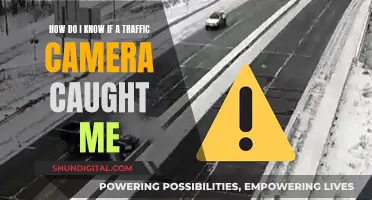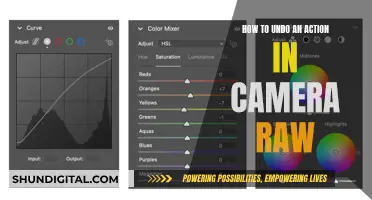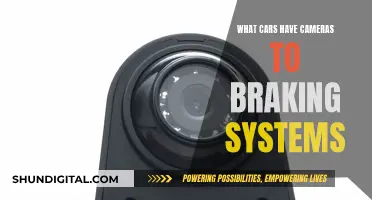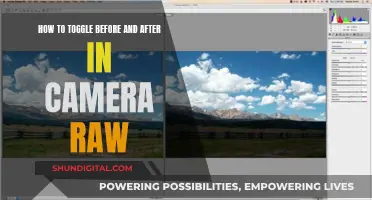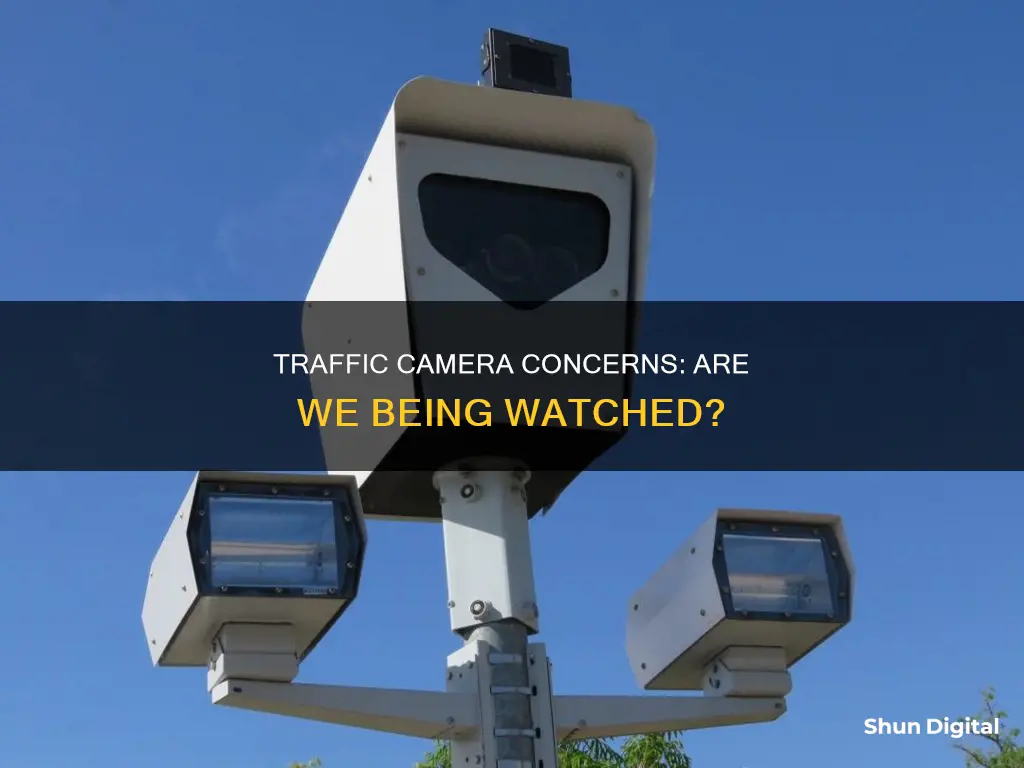
Traffic cameras are an effective way to monitor and manage traffic flow and road safety. They are typically installed at traffic lights on major junctions and busy roads to capture images or videos of vehicles passing through. These cameras are equipped with sensors to detect and photograph vehicles that run red lights, serving as a deterrent to reckless driving and aiding in enforcement actions. While not all traffic lights have cameras, they play a crucial role in maintaining road safety and reducing the likelihood and severity of collisions caused by speeding or red-light violations.
| Characteristics | Values |
|---|---|
| Purpose | To prevent drivers from causing unacceptable risk to themselves and other road users |
| Installation Location | Traffic lights on major junctions, roads across London, and sites where people have been killed or seriously injured |
| Functionality | Use sensors to detect and photograph vehicles passing through a junction during a red light |
| Penalty | A fine of £100 and three points on the driver's license |
| Detection | Most traffic cameras do not flash and use an infrared flash that is not visible to the driver |
What You'll Learn

Traffic light cameras capture drivers running red lights
Traffic light cameras, also known as red-light cameras, are used to monitor and enforce traffic laws at intersections and major junctions. They are designed to capture any vehicle that enters an intersection after the signal has turned red. These cameras are triggered by sensors installed in the road, which detect when a vehicle passes over the stop line and automatically take photographs as evidence of the violation. The photographic evidence is then reviewed by law enforcement officials, who determine whether a citation or fine should be issued to the owner of the vehicle.
Red-light cameras are commonly found at traffic lights on major junctions and busy roads, especially those with a high number of crashes or violations. They are often placed on tall metal poles before or after the traffic light or mounted on street light poles. While not all traffic lights have cameras, they are very common, with over 800 red-light cameras in London alone. These cameras are an effective tool for improving road safety and reducing collisions, especially right-angle crashes, which are often caused by red-light running.
The use of red-light cameras varies internationally, with over 75 countries worldwide implementing them. In the UK, for example, these cameras were introduced in 1991, and if a driver is caught running a red light, they will receive a Notice of Intended Prosecution (NIP) within 14 days, resulting in a fine and penalty points on their licence. In the US, the use of red-light cameras differs by state, with some states prohibiting their use altogether. Fines also vary, with a $50 fine in New York compared to approximately $500 in California.
While red-light cameras are generally effective in improving road safety, there are some concerns and limitations to their use. For example, they may cause drivers to make sudden stops to avoid a ticket, potentially increasing the risk of rear-end collisions. Additionally, the accuracy of these cameras has been questioned, with a margin of error of about 2% reported.
Converting to Camera Raw: A Step-by-Step Guide
You may want to see also

Traffic cameras don't always flash
Traffic light cameras or red light cameras are installed at traffic lights on major junctions to capture any driver running a red light. They are also used to monitor the flow of traffic on motorways, busy roads, and junctions. However, not all traffic lights have red light cameras.
While some traffic cameras use a flash, it is not always visible to the driver. Most traffic cameras use an infrared flash, which is invisible to the human eye. This means that if you do happen to run a red light, you may not always see a flash, but that does not mean that the camera has not captured your vehicle.
Different types of cameras are used for speed and red-light enforcement. For example, the Gatso camera, which is commonly used, does flash, even if there is no camera installed in the housing. On the other hand, the Truvelo camera does not flash.
If you are caught running a red light by a traffic camera, you will typically receive a fine and points on your license. You may also be required to take an educational course. It is important to obey traffic signals and be aware of your surroundings to avoid breaking any traffic rules and endangering yourself or others.
Charging Your GoPro Ultra HD Camera: A Step-by-Step Guide
You may want to see also

Traffic cameras can be accessed by the public
Traffic cameras are typically used to monitor vehicles and events on the road. They are often installed at traffic lights on major junctions to capture any drivers running a red light. In some places, such as London, they are also used to enforce speed limits and reduce dangerous driving behaviours. While the primary purpose of traffic cameras is to improve road safety and enable law enforcement, the public can also access certain traffic camera images and footage in some cases.
For example, in Austin, Texas, members of the public can view still images from traffic cameras through the city's open data portal. These images are updated once a minute and can be accessed by selecting a location and clicking the "Screenshot Address" link. Additionally, in the UK, anyone can access traffic camera images on Traffic England's website. This can be useful for individuals involved in road collisions who need access to camera footage as evidence for insurance or legal purposes.
However, it is important to note that not all traffic camera footage is readily available to the public. In some cases, a subpoena or legal action may be required to obtain footage, especially if the camera is owned by a private company. The process for accessing traffic camera footage can vary depending on the location and the owner of the camera, which could be the local government, transportation department, or a private contractor.
Transport for London (TfL) provides live CCTV images and videos of major London roads on their website. However, they do not archive any image or video data from the CCTV feeds, so they cannot provide footage for vehicle insurance purposes. Similarly, the website UK Traffic Delays provides reliable travel information for the UK but does not offer archived footage for specific incidents.
Understanding Camera Rotation: Computer Vision's Essential Concept
You may want to see also

Traffic cameras can be used to monitor traffic flow
Traffic cameras are an essential part of a city's transportation system, helping to improve traffic flow and road safety. They are typically placed at strategic locations such as complex intersections, roads with heavy congestion, or areas with extreme weather conditions. These cameras are often mounted on poles, bridges, or other structures to provide a comprehensive view of the traffic flow and conditions.
Another type of traffic camera is the traffic surveillance camera, which is a more general-purpose camera used to monitor traffic flow and conditions. These cameras are often mounted on poles, bridges, or other structures and capture images that are transmitted to a control center or displayed on monitors for personnel to view. Traffic surveillance cameras may also be equipped with sensors to detect vehicle speed, enabling authorities to enforce speed limits and issue tickets to speeding drivers.
In addition to red-light and surveillance cameras, there are also speed cameras, which are used specifically to detect speeding violations. These cameras can be fixed, mounted on poles or structures, or mobile, mounted on vehicles like police cars. By using a combination of sensors and laser technology, speed cameras accurately measure vehicle speed and capture images of speeding vehicles.
Traffic cameras can also be integrated with intelligent transportation systems (ITS) to provide real-time data for traffic management and noise mapping. For instance, in the Italian city of Piombino, a video measurement system (VMS) was developed to detect and classify vehicles according to the CNOSSOS-EU noise assessment model. The VMS, consisting of a video recording system (VRS) and a video analysis system (VAS), was used to perform traffic measurements and create noise maps of the area.
Overall, traffic cameras play a vital role in monitoring traffic flow. They help enforce traffic laws, improve road safety, and provide valuable data for transportation management and noise reduction strategies. By utilizing different types of traffic cameras and integrating them with advanced technologies, cities can enhance traffic flow, reduce congestion, and improve overall road safety for motorists and pedestrians.
Adjusting Your Vivotek Camera: Tips for Optimal Focus
You may want to see also

Traffic cameras can be used to enforce speed limits
The use of traffic cameras for speed enforcement has been shown to have a significant impact on reducing crashes and improving road safety. Studies have found that speed cameras can lead to a reduction of up to 44% in fatal and serious injury crashes. For example, the UK Department for Transport estimated a 22% reduction in personal injury collisions and a 42% decrease in people being killed or seriously injured at camera sites.
In addition to fixed-location cameras, mobile speed cameras are also used. These can be handheld, tripod-mounted, or vehicle-mounted, allowing for enforcement in a greater range of locations. The presence of these cameras acts as a deterrent to reckless driving, and they can also be used to collect data on traffic flow and vehicle speeds.
While some people may view traffic cameras as a revenue-generating tool for local governments, they are primarily a road safety measure. The cameras encourage drivers to adhere to speed limits and reduce the risk of collisions, especially in areas with a high risk of accidents.
To further enhance the effectiveness of traffic cameras in enforcing speed limits, authorities can invest in new technologies such as average speed cameras, which calculate a vehicle's speed over a longer distance, and mobile speed cameras, which can be deployed to locations not covered by fixed camera networks. By combining these tools with educational initiatives and on-street enforcement by police officers, a comprehensive approach to speed limit compliance and road safety can be achieved.
Bridge Cameras: Capturing RAW Images
You may want to see also
Frequently asked questions
Traffic cameras are used to observe vehicular traffic on roads, especially highways, freeways, expressways, and arterial roads. They help monitor traffic conditions and can be used to detect motoring offenses such as speeding, red-light running, and unauthorized use of bus lanes.
Traffic cameras are typically mounted on high poles, masts, or traffic light poles at intersections. They are connected by optical fibers buried alongside or under the road and powered by electricity or alternative sources like solar panels. The live video feed is sent to a monitoring center, which can dispatch assistance in case of accidents or disruptions.
Yes, in some jurisdictions, traffic camera footage is archived and accessible to the public through an Access to Information request. However, privacy guidelines restrict the availability and quality of footage to protect individuals' privacy.
No, traffic cameras do not constantly record or archive footage. They are primarily used for real-time monitoring of traffic conditions and incident detection. Any recordings made are typically for diagnostic purposes and are discarded afterward.
Privacy is a key concern in the management of traffic cameras. Measures are taken to protect individuals' privacy, such as low-resolution footage, restricted access, and guidelines for staff operating the cameras. Additionally, some jurisdictions consider traffic camera footage as public domain, allowing media outlets to access and broadcast the footage.


